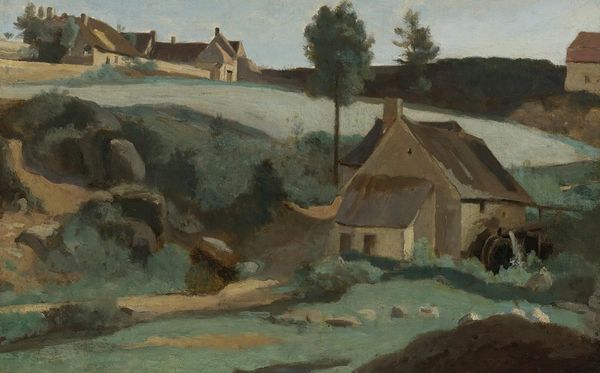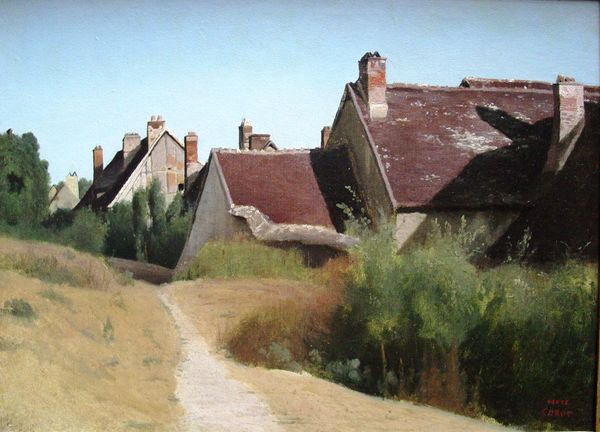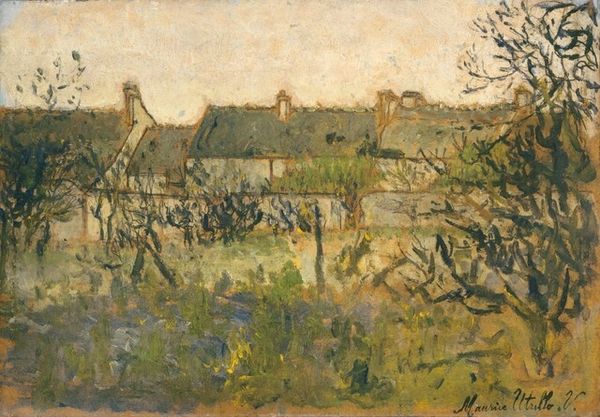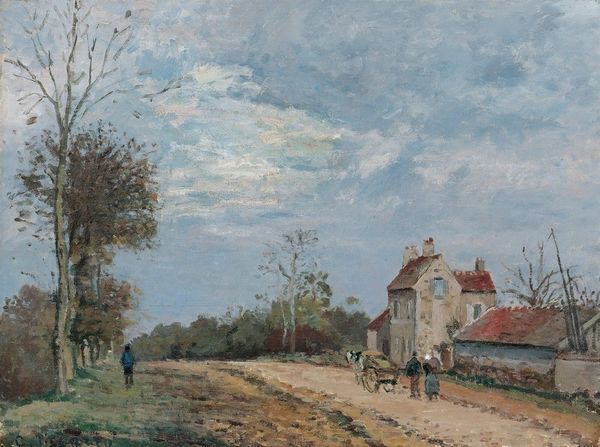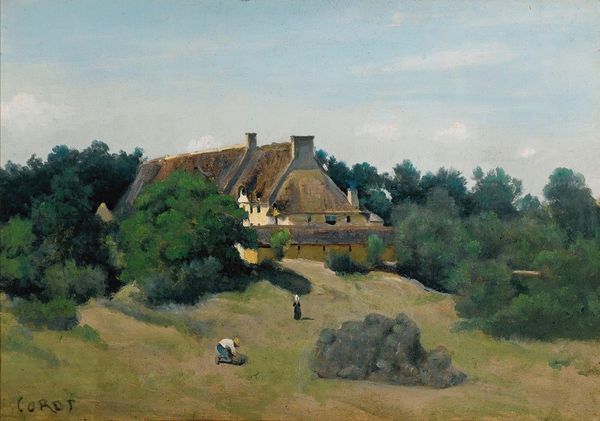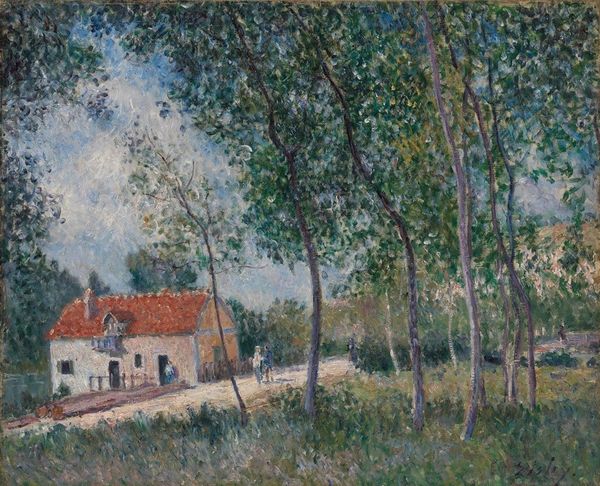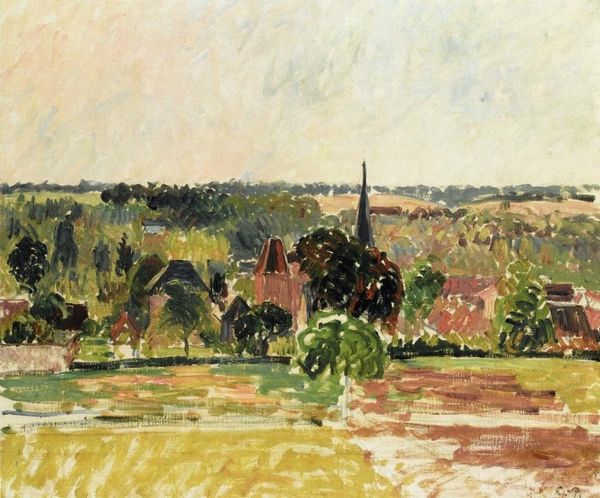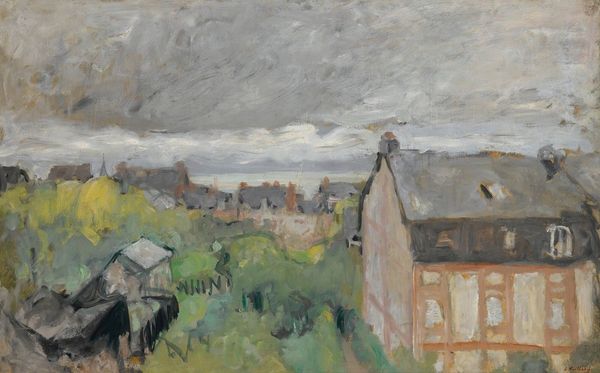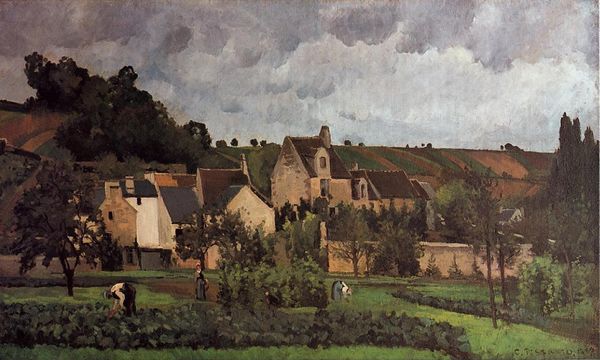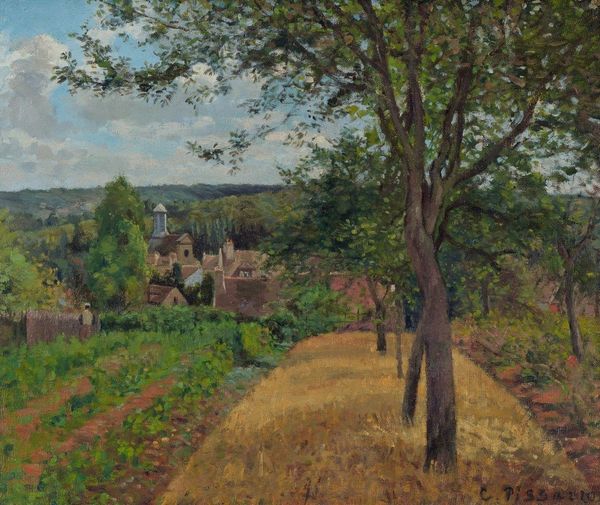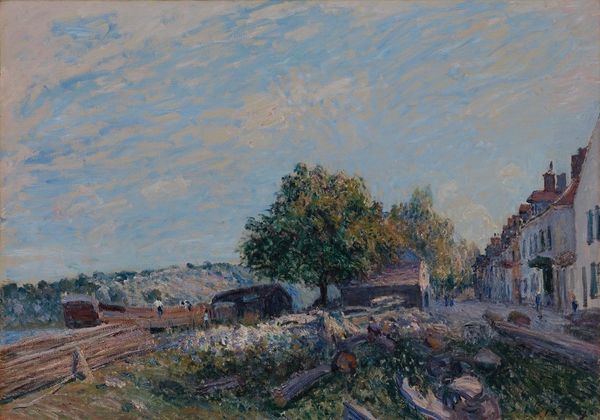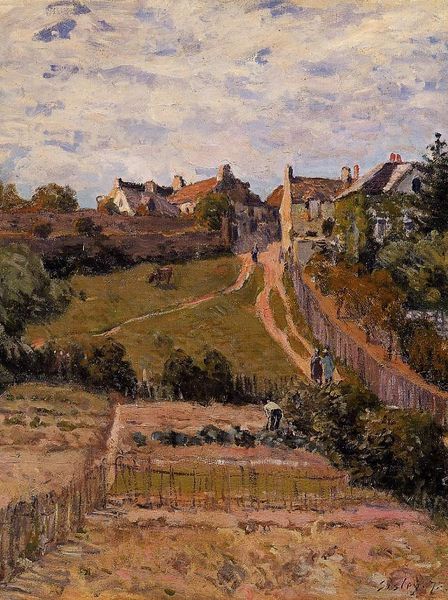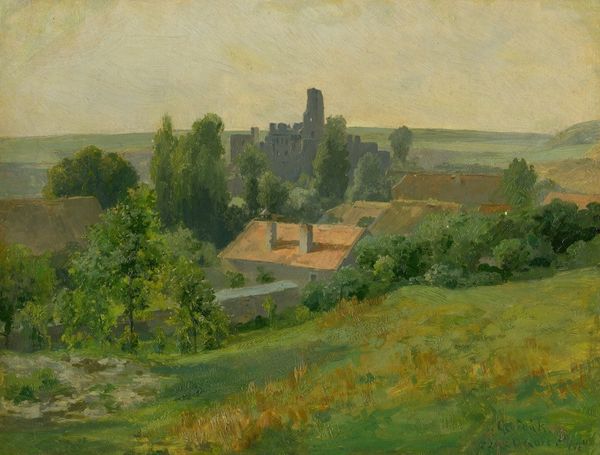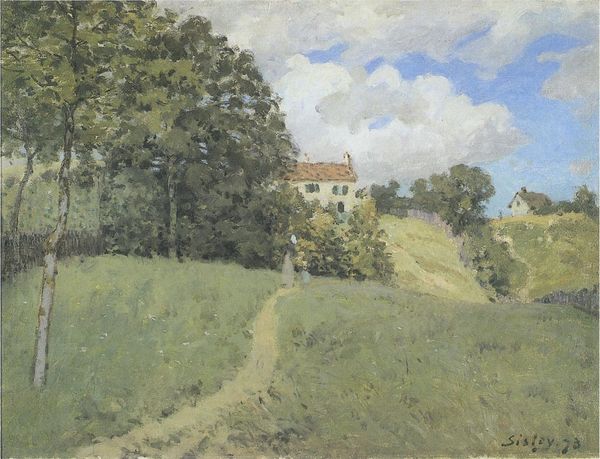
Copyright: Public domain
Editor: Camille Pissarro’s "Harvest in the Orchard, Eragny," from 1899, renders a scene in oil with a distinct plein-air sensibility. I’m struck by how quietly powerful the painting is. The orchard almost seems to hum with activity, despite its peaceful appearance. What do you see in this piece? Curator: It's interesting you perceive a quiet power. The enduring motif here for me lies in the 'orchard' itself - it is no accident that this contains within it, not so deeply concealed, 'orcha', or even 'orchestra'. Orchards often represent cyclical returns, life, and abundance, but do they signal something deeper here? Editor: You're pointing out how orchards relate to cyclical returns. Is there a particular tradition that might speak to this painting? Curator: Pissarro wasn’t merely depicting a landscape; he was capturing a persistent ideal. In iconography, an orchard is connected to the story of the Garden of Eden. The connection to earthly paradise through cultivating something like an orchard is no coincidence when looking at Pissarro who would later associate himself with anarchists who want to "cultivate the soul". Pissarro links cultivation and hope, even as modernity advances all around the people in this garden, in this orchard. Note the high horizon! Editor: So the painting invites us to consider how our relationship with nature mirrors our inner lives? Curator: Precisely! Cultivating our orchard within can lead to a fruitful existence. Editor: Thank you! I’ll definitely consider that relationship when looking at landscape paintings from now on. Curator: Indeed, the orchard calls us to examine the roots that nurture our existence, in art, and beyond.
Comments
No comments
Be the first to comment and join the conversation on the ultimate creative platform.
